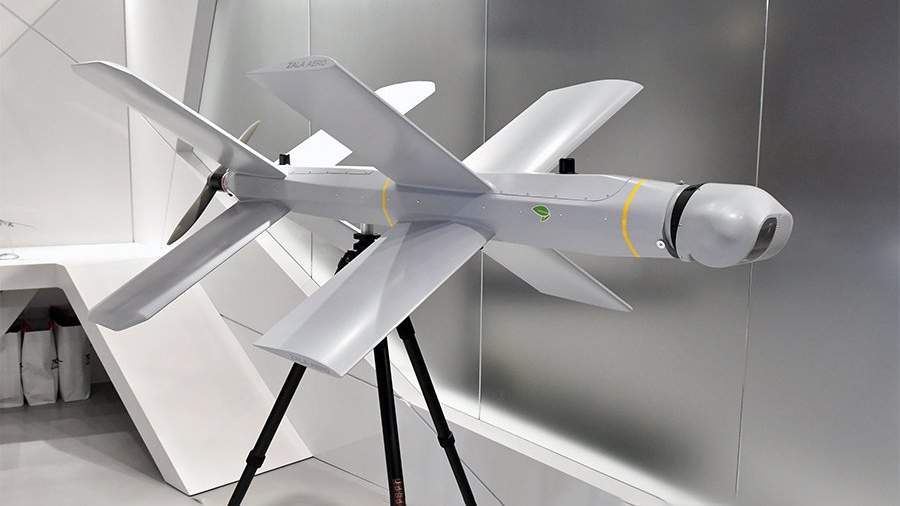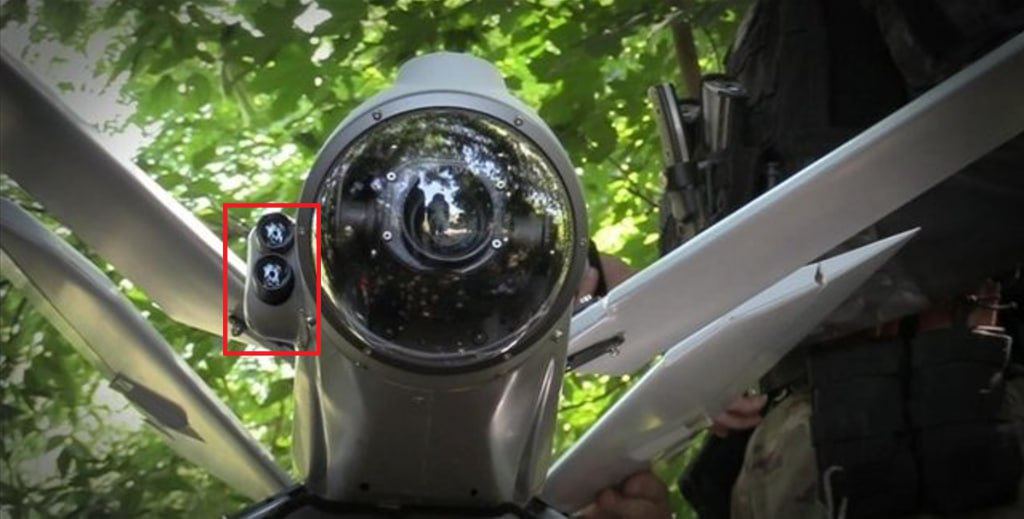Despite significant global interest in Russia’s Lancet unmanned aerial vehicle (UAV), the country is holding back on exporting this highly acclaimed drone, citing its predominant use and demand within the Russian military.
Russia Installs Laser Eyes, Twin Cameras & Warheads On Lancet UAVs To Bust Ukraine’s Cope Cages
At the Dubai Airshow 2023 International Aviation and Space Exhibition on November 15, Rosoboronexport Director General Alexander Mikheyev disclosed that foreign customers are showing notable enthusiasm for the Lancet UAV. Yet, he emphasized that this loitering munition is currently unavailable for export to foreign countries.
Mikheyev said, “The munition has proven excellent in real combat operations. The Lancet is also receiving much attention in the foreign market, but it is not supplied abroad as the Russian Armed Forces’ need for it is high, and there is no export permit documentation yet.”
The Lancet kamikaze drone, crafted by ZALA Aero Group, a subsidiary of the Russian defense industry Kalashnikov concern, has showcased its effectiveness in the current Ukraine conflict, registering numerous confirmed hits on Ukrainian equipment.
Consequently, despite mounting demand for this specific drone within the Russian military, Lancet currently lacks the necessary export permits.

The Director General of Rosoboronexport stated that the company is endorsing Kub-E in this category. Kub-E, a loitering munition system, is also developed and manufactured by the Russian defense company Zala Aero.
The economically efficient Lancet suicide drones, currently under US sanctions, have undeniably demonstrated their outstanding effectiveness in neutralizing Ukraine’s valuable Western-donated military assets, thereby introducing an additional layer of complexity to Kyiv’s already protracted and challenging counteroffensive efforts.
The name “Lancet” is believed to be inspired by the precision linked to the sharp medical instrument to highlight the drone’s ability to target with surgical precision.
Introduced by Zala at a military expo in Moscow in 2019, the Lancet series comprises two models: the larger Lancet-3, boasting a three-kilogram maximum payload, and the foldable Lancet-1, equipped with a one-kilogram payload.
Despite its compact size, even the smaller Lancet-1 can precisely disable or destroy military assets. Notably, these models feature a distinctive double X-wing design, drawing comparisons to the Israeli-built UVision Hero family of drones developed around the same timeframe.
Recognizing the Lancet’s effectiveness on the battlefield, Moscow rapidly scaled the production. In July 2023, it was observed that Russia repurposed abandoned shopping center spaces previously occupied by Western companies for this purpose.
Lancet Emerges As Russia’s Most Dreaded Drone
Since its extensive deployment in late 2022, the Lancet has become Russia’s most effective weapon for targeting high-value assets situated kilometers behind the enemy lines. With a proven track record, Lancets have effectively neutralized diverse targets, including Leopard tanks, Western howitzers, S-300 air defense launchers, and radars.
Ukrainian officials openly acknowledged the threat posed by Lancet. In a recent essay discussing technological challenges in positional warfare, Ukrainian Commander-in-Chief Valerii Zaluzhnyi highlighted the Lancets, noting the challenge of countering them, especially when targeting illuminated assets by other Russian reconnaissance drones.
Furthermore, Russian army units are now equipped with an advanced version of the Lancet kamikaze drones, as reported by the EurAsian Times. These upgraded models feature a secondary camera unit and a dual tandem warhead for penetrating overhead protective cages and Explosive Reactive Armor (ERA).

This development raises significant concerns for the Ukrainian military, as these enhanced drones can effectively overcome reactive armored anti-tank grids and anti-drone nets.
Despite its profound impact on Ukrainian forces, the Lancet operates with deceptive simplicity.
Russia’s advanced long-range reconnaissance drones, such as the Orlan-10 and SuperCam, identify targets. Once a target is pinpointed, a Lancet is launched from a purpose-built catapult, achieving a top speed of approximately 300 kilometers per hour.
The Lancet’s on-board electronics rely on Western-built microchips. Despite sanctions, these microchips continue to enter Russia through third-party countries.
For instance, a Lancet drone intercepted by Ukrainian forces in March 2023 was discovered to incorporate silicon components sourced from prominent US-based semiconductor firms, including NVIDIA and Xilinx.
Nonetheless, the Lancet also effectively fills a crucial void in mid-range precision strikes and counter-battery fire capabilities, an arena where Russia encountered difficulties in Ukraine due to the absence of a system comparable to the US-built HIMARS.
- Contact the author at ashishmichel(at)gmail.com
- Follow EurAsian Times on Google News




